We visited Muhammad Ali Mosque with our guide, Hanan, on a Friday. In every mosque, there is a sermon or khutbah every Friday after the mid-day prayer, during which time mosques are closed to visitors. This was just the first reason that we scheduled our visit to the mosque in the morning. The second reason that we scheduled our visit in the morning was to avoid getting entangled in a possible protest. Since Israel began its invasion of Gaza after Hamas’ attack on October 7, downtown Cairo has seen regular protests, some even swelling to tens of thousands of protestors. The main purpose of the protests is to show solidarity with the Palestinians. Some Egyptians also protest other grievances like the upcoming presidential election. Public protests are generally not allowed in Egypt and the government has tried to discourage any large gatherings. The protests usually take place on Friday after the khutbah, weaving through downtown Cairo and ending in Tahrir Square, the traditional site for major protests and demonstrations.
On this Friday morning, there was a strong police presence throughout the downtown area. Security was tight and some areas were closed to Egyptians. It was only when our driver Farag, explained to the traffic police that we were tourists that we were allowed through certain check points. There were many military vehicles, uniformed police officers, plain-clothes officers and police in riot gear lining the streets. Admittedly, it was unnerving and it occurred to us to cancel the tour and retreat back to our Airbnb, but Farag and Hanan continuously reassured us that everything was ok. We also observed that the police presence did nothing to deter the ordinary Egyptians who didn’t seem bothered and continued with their Friday routines of shopping and chatting on the street with friends.
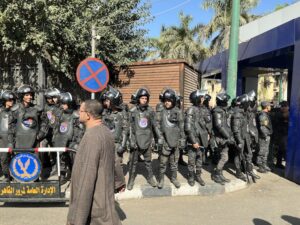
The Muhammad Ali Mosque in Cairo, also called Alabaster Mosque, was constructed between 1830 to 1848 by Muhammad Ali who ruled Egypt from 1805 to 1849. The mosque is situated in the Cairo Citadel, a medieval Islamic fortress built by Saladin in 1176 to protect Cairo from Christian Crusader attacks. It was subsequently expanded and rebuilt by other rulers.
The Muhammad Ali Mosque was built in the Ottoman style, modelled after the Sultan Ahmed Mosque in Istanbul, which our family visited in 2019 so the appearance of the mosque was familiar to us. The mosque has a central dome with four small and four even smaller semi-circular domes. There are two tall Turkish-style minarets that rise high above the mosque. At the center of the alabaster courtyard, there is an elaborate ablutions fountain, no-longer functional, made of marble.
Hanan pointed out that there are certain distinct features inside every mosque. All mosques have a mihrab, a niche indicating the direction of Mecca. When praying, Muslims face the mihrab, thus Mecca. In every mosque, there is a narrow staircase leading up to an enclave where the imam stands to deliver sermons, called a minbar. Muhammad Ali Mosque has two minbars. The larger, wooden minbar was original and the smaller alabaster one was a gift from King Farouk in 1939.
Outside of the mosque, we enjoyed the exceptional views of Old Cairo.
Our family is not religious, but I believe it is important for us to learn about and respect the religions of the world. Firstly, we need to have the knowledge to make active choices about what we believe. Secondly, roughly 30% of the world is Christian, 25% of the world is Muslim, 15% of the world is Hindu and 6% of the world is Buddhist. To truly understand others, we need to understand what they believe in. Thirdly, religion has had an enormous impact on history and historical figures. To be a student of history also includes the study of religion.
Since I was young, I have always loved visiting places of worship – churches, mosques, synagogues and temples alike. Although I always feel like an outsider, I enjoy experiencing these sacred places through my senses. Each place of worship has certain identifying sights, sounds, smells and tactile sensations. I enjoy learning about the tenets of the faiths, the holy texts and books, the rituals, the history and changes over time, and the disagreements and conflicts within and between the religions.
When I was in Junior High School and High School, I had several close Korean and Chinese friends who were Christian. Their Baptist church was just down the street from where I lived. I envied them because they had a tight-knit group of friends with whom they shared Fellowship on Friday nights. They even had a Church band. On Sundays, they attended church together with their families. They went on ski trips, had barbecues and even traveled abroad together. To me, it seemed… fun. They invited me to attend Fellowship with them several times and I enjoyed it. After a while, I stopped going because I felt terribly guilty that in my heart, I knew I didn’t believe.
In my 20s, one of my favorite authors was Karen Armstrong, an ex-nun, who wrote many books about religions and excelled at comparative religion. Reading her book, A History of God, was an electrifying and eye-opening experience for me, as someone who did not grow up in any faith. The book shows the evolution of the three major monotheistic religions and their deep historical connections. Many of my questions were answered and this book became the foundation of my future exploration of religion.
When I became a mother, I could see how being a part of a church would be so helpful and reassuring. There was an abundance of resources – a strong and warm community among which to raise my kids. More experienced mothers would be there to reassure and guide me. The faith provides a structure, a set of rules, that would make it easier for my kids to understand life in all its complexity. I wished I did, but I didn’t feel the faith in my heart.
My keen interest in religion, I suspect, is somehow indicative that I am open to it. I guess I am still waiting for God or some other higher power to reveal himself to me.
Author
-

Song is the mother of four children. She and her family have stepped away from it all and in September 2023, began traveling the world while homeschooling. Song is an ABC (American born Chinese) and has an undergraduate degree from Cornell and an MBA from Harvard. She is an entrepreneur and an educator. Her hobbies include learning, traveling, reading, cooking and baking, and being with children.


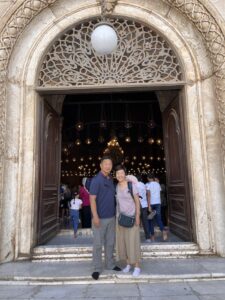
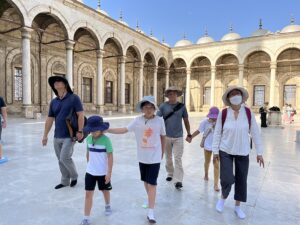
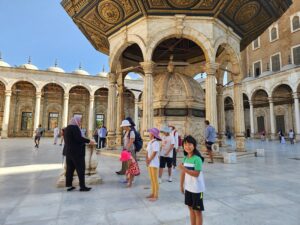
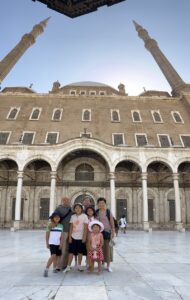
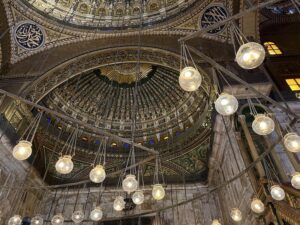
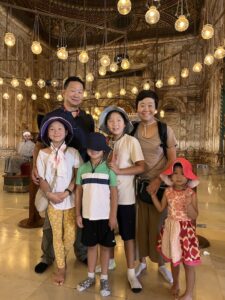
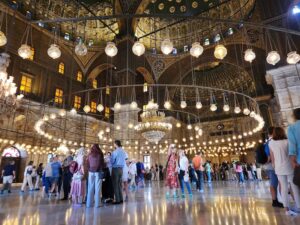
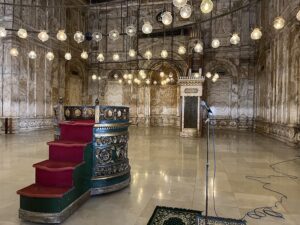
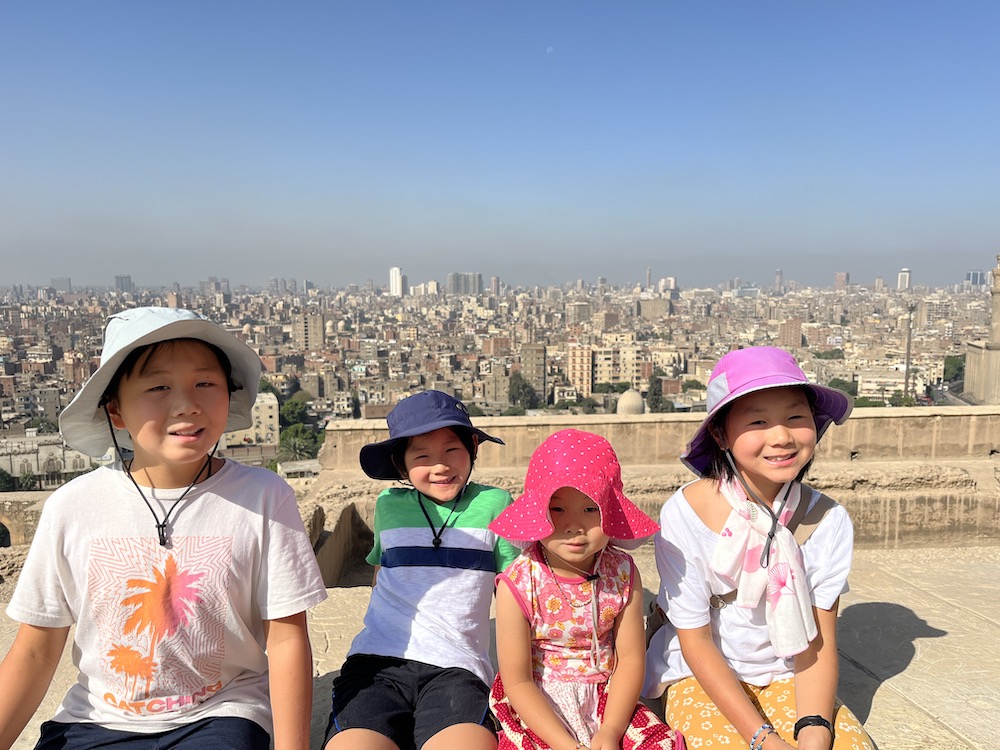


11/3 大城堡,穆罕穆德阿里清真寺
大城堡之清真寺,雪花石膏清真寺。
穆罕默德阿里造,宏偉神聖茲在茲。
兩座尖塔大圓頂,華麗吊燈高藻井。
精美壁龕宣講台,寺內禮拜外中庭。